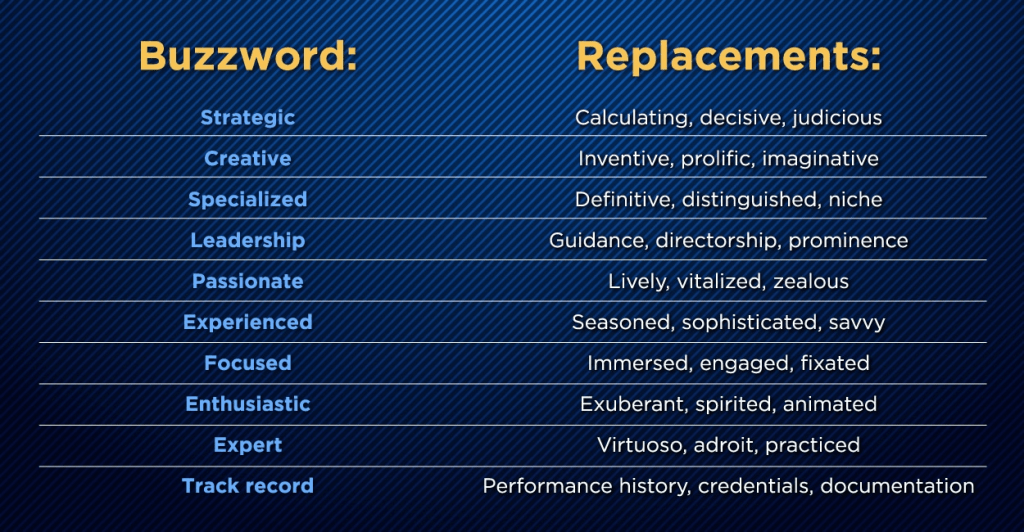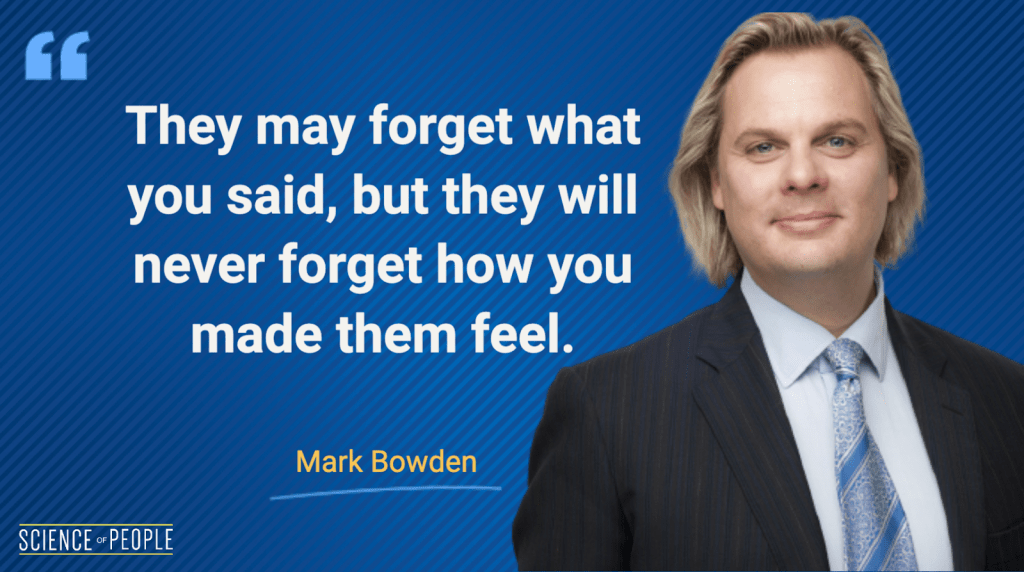This article is part of our body language guide. Click here for more.
Recently, I landed a 6-figure contract with one of the biggest tech companies in America. And while I prepared an excellent sales pitch, it wouldn’t have mattered if I didn’t get my body language right.
In this guide, you’re going to learn the exact body language tips I used to close the deal, including:
- how to look and perform amazingly in video call negotiations
- what to do with your hands during a sales pitch (hint: where you put your hands matters!)
- what to do when your competitor tries to outshine you
- the #1 nonverbal cue you don’t want to see before closing a deal
- how my mistake with a 2-year-old led me to win a 6-figure contract
But before we dive in…

Can You Read Body Language?
How good are your body language skills? Take our free body language quiz to find out!
Respond to Their Positive Cues
During any meeting, negotiation, or interview, you want to be on high alert for positive cues. When you see a positive cue, it means you have mentioned something engaging, interesting, or that they agree with. Here are a few cues to be on the lookout for:
Positive Cue: Nodding
If they nod while you explain why you deserve a raise or why you want more time off, it might mean they agree with your reasons and are likely on the same page. On the other hand, it could simply signal empathy and understanding, and not necessarily agreement.
Positive Cue: Leaning
If they lean toward you as you’re speaking, this is a nonverbal sign of partnership and camaraderie. It can also signal interest in what you have to say. Keep going!
Positive Cue: Showing hands
If their hands are under the table, especially in a meeting or an interview, it could mean they are hiding something, feeling uncomfortable about something said, or not happy about the situation.
If they show their hands, however, it can demonstrate that they are sturdy and convinced. If you see this when closing a deal, it’s a great sign they want to continue.
Respond to Their Negative Cues
In addition to looking for the positive, you also need to be aware of the negative. Here are the cues that are negative because they might signal disagreement or disinterest. If you see one of these, immediately pause and do some research—what just happened to trigger that negative cue?
Then go into rapport. How can you bring them back to what’s positive?
Here are the negative cues to look out for:
Negative Cue: Blocking
If they block themselves by holding something between the two of you, such as their hands or their coffee mug, it’s a warning sign they don’t like what you’re saying.
You can stop their behavior by handing them something, such as a report or pen. It forces them to let go of what they’re holding on to and refocus on you.
Pro Tip: Want to find out what they’re thinking? Offer them a coffee and observe what they do with it:
- When someone is hesitant, unsure, or feeling negative, they might place the cup on the opposite side of their body to form a single-arm barrier.
- When accepting and happy, they might place it to the side of their body to indicate openness.
Negative Cue: Contempt
If they show a one-sided mouth raise or smirk at you, beware! This is the expression of contempt, which means hatred or disdain. Pause where you are in your communication to revisit your last point. You might want to provide further details and clarification.
Action Step: Knowing whether your negotiation counterpart agrees with your request before they give their final answer is a great way for you to tell if you need to try a different approach in your negotiation or if what you’re saying is working well.
Negative Cue: Pushing away from the table
A sudden stiff-arm push away from the table is possibly an accurate indicator of disagreement. That person might feel threatened. A close friend of mine noticed this cue when she was pitching her sales training to a large company. She noticed the manager pushed away from the table as she stated her price. She knew he wouldn’t budge.
He ended up countering—with 50% of her asking price. Ouch.
Negative Cue: Pursed lips
Pursed lips can indicate disagreement, dissatisfaction, or suppressed anger. Here’s an amazing story of how pursed lips saved millions of dollars:
When ex-FBI agent Joe Navarro1https://www.amazon.com/gp/product/B0010SKSTO/ref=dbs_a_def_rwt_bibl_vppi_i0 had a consulting assignment with a British shipping company, the company’s client asked him to sit through contract negotiations with another huge multinational corporation. This corporation would negotiate with Navarro on the price of outfitting the client’s vessels.
Navarro, wanting to watch for body language cues, asked the big company’s chief negotiator to present the contract clause by clause.
And then he noticed it—the lip purse. The chief negotiator pursed his lips when a clause detailing outfitting of a specific part of the vessel was mentioned. This specific clause would involve millions of dollars that Navarro’s client would have to shell out.
Because Navarro noticed this, he passed a note to his client. In the end, the two negotiators hammered out an agreement that saved his client 13.5 million dollars.
Negative Cue: The Lintpicker
Brushing a hand across the knees or thighs is the same gesture we use when brushing away invisible crumbs. In short: unwanted, dirty, and annoying.
Picking off lint (whether invisible or not) could be interpreted as dismissing something2https://www.amazon.com/Silent-Language-Leaders-Help-Hurt-How/dp/0470876360.
You might notice this cue after presenting a benefit they might not agree with. And if you notice this after presenting hard evidence during a negotiation? Don’t be surprised if it’s wrong.
Negative Cue: Rubbing eyelids
You may see people rubbing their eyelids during conversations and interrogations when they are asked a difficult or stress-inducing question. People rub their eyes if they want to cut off eye contact to reduce their stress or anxiety.
Emphasize Warmth in Video Calls
The ugly symptoms of Zoom Fatigue.
Tired eyes, foggy thinking, and irritability, to name a few.
But video call negotiations don’t have to be like that!
Many sales pitches are going to video nowadays. But salespeople on calls are making one critical mistake—they’re pitching exactly like they would in person.
Video call negotiations are a different ball game than in-person meetings.
If possible, you should always opt for negotiations in person. A Harvard study shows that:
- 87% of professionals think face-to-face meetings are essential for doing business, and
- 95% said they’re key to successful, long-lasting business relationships2https://www.amazon.com/Silent-Language-Leaders-Help-Hurt-How/dp/0470876360.
But if you have to do a video call, I want you to focus MORE on heuristic cues rather than your sales pitch.
What are heuristic cues?
A heuristic cue is a “mental shortcut” that helps us make an easier decision. It means “to discover” in Greek and includes things like common sense, educated guesses, and past personal experiences.
In video calls, people are influenced more by heuristic cues rather than the quality of the argument2https://www.amazon.com/Silent-Language-Leaders-Help-Hurt-How/dp/0470876360.
In other words, video calls are so cognitively demanding that doing things to reduce your client’s mental load can lead to higher negotiation success.
And the best way to build mental shortcuts? Emphasize your nonverbals of likability and warmth. Demonstrating these nonverbals builds rapport fast, and your client will be more receptive to your sales pitch.
It’s the same reason someone would pay $450 million for a painting of Salvatore Mundi3https://www.wsj.com/articles/leonardo-da-vinci-painting-salvator-mundi-sells-for-450-3-million-1510794281.

I mean, it’s just a painting, right? Nope—this one’s by Leonardo da Vinci, so you automatically associate it with higher value.
Action Step: Maximize your warmth and likability heuristic cues on video calls with these tips.
- Back up! I see many video call beginners put the webcam way too close. This is unnatural and it feels like an invasion of space. Push the webcam slightly back so your client can see your hand gestures.
- Stop staring at yourself. In one survey by HighFive4https://qz.com/703513/too-many-workers-arent-wearing-pants-on-video-calls, 30% of respondents said they spent half the Zoom call looking at their own face. Really, your eyes shouldn’t be on the screen so much. They should be looking directly at the webcam. This builds direct eye contact with your client and increases social bonding.
- Wave and smile. What better way to signal friendship than smiling and waving? I do this in all my video calls, and it’s an instant and easy rapport-booster.
Want more body language tips on video calls? Head on over to my ultimate guide to looking good on Zoom and video calls.
Tweak Your Digital Reputation
First impressions matter. But chances are, in many modern business negotiations, your client or prospect will have already made up their mind about you way before the sales meeting.
Why? It all starts online.
Perfecting your online impression is the first step toward any great negotiation.
Think of your online impression as your digital reputation. If you look good and convey the right message, chances are your client will feel it too.
What kinds of emotions and feelings do you want to trigger? Do you want to position yourself as an expert? Seem humorous? Showcase your motivation? Align your digital reputation with the values of your company and who you are.
Action Step: One way to do this is to update your LinkedIn profile and make sure your social media is up to date and creates the values you desire:
- Get rid of buzzwords. Do you use the same old ‘buzzwords’ like everyone else does? This is a one-way ticket to feeling and looking the same as everyone else. Don’t be boring! Try replacing these words:

- Go beyond your resume. A lot of people make the mistake of sticking their resume on LinkedIn and thinking this is enough. But LinkedIn is more than that. This is a great place to showcase your personality and connect with others on a human level.
Want more LinkedIn tips? Head on over to our article: The 15 Best LinkedIn Profile Tips To Make Your Profile Pop.
Gesture in The 3 Planes
You probably are already familiar with using the right hand gestures. But did you know where you gesture relative to your body can make or break a negotiation?
Body language expert Mark Bowden5https://truthplane.com/home/people/mark-bowden/ says you should gesture in the right “planes” to bring forth different emotions from others.

In other words, think of your body in 3 different planes6https://www.amazon.com/Winning-Body-Language-Conversation-Attention/dp/0071700579:

- The PassionPlane, which is the area in front of your chest and neck.
- The TruthPlane. This is the area of the body in front of the belly button.
- The GrotesquePlane. This is the region of the body below the waistline. Gestures in these areas are untrustworthy and hidden from sight.
Start with gesturing in the TruthPlane. This area is for stating facts about your product or service—why it’s important, the features, why your client would benefit from it.
After you’ve won over your client’s brain, you’ve got to win over their heart. This is where the PassionPlane comes in. Gesturing in this zone creates an “energetic buzz” and raises motivational levels.
When handling objects, bring samples or reports up to the PassionPlane to give them an air of excitement, or take them to the TruthPlane to give them trusted status6https://www.amazon.com/Winning-Body-Language-Conversation-Attention/dp/0071700579.
If you need to, you can also lower your hands down to your sides in the GrotesquePlane when talking about your competition. This might bring up negative feelings in your client that are associated with your competition.
Finally, end by returning to the TruthPlane again for a final sense of completion. Throughout your pitch, you generally never want to drop your hands and keep them there, unless the crowd is too excited and needs lowered energy.
Pro Tip: Symmetrical hand gestures cause people to feel safer than asymmetrical ones6https://www.amazon.com/Winning-Body-Language-Conversation-Attention/dp/0071700579. You can create a bias for a product in your audience’s mind by using symmetrical gestures for your desired product and asymmetrical gesturing for your competitors or other less-desired options.
Special Note: I have personally found good results using these planes. While I can’t find any hard science on them, I suggest practicing them to see if they work for you.
Height and Handshake
When meeting your potential client, keep in mind height and handshake. These both play a huge part in determining power dynamics. Follow these height tips6https://www.amazon.com/Winning-Body-Language-Conversation-Attention/dp/0071700579>:
- If they are standing across the room, make sure they can see all of you to your feet and you’re not blocked. If you’re blocked, defensive reactions can occur.
- If they are there when you turn around, make body contact through a handshake to give the message of safety. This counteracts the “Oh, shoot! They snuck up behind me!” feeling.
- If they are sitting at a table or a sofa, don’t hover. Get to the other person’s height as soon as possible. You can sit, squat, or even go down on one knee to reduce height differences.
Generally, when it comes to height:
- If you are taller than them… step back or don’t get too close so that you do not appear to be so dominant.
- If you are shorter than them… try to keep a distance to avoid looking straight up6https://www.amazon.com/Winning-Body-Language-Conversation-Attention/dp/0071700579.
And when you go in for the handshake, make sure you’re not giving a cold or clammy one. A great tip is to give the other person status/power by slightly turning their hand when handshaking so it is slightly over yours.
You are likely to feel more unsatisfied with an interaction when you have less power than the other person7https://www.amazon.com/Nonverbal-Communication-Human-Interaction-Knapp/dp/1133311598.
You can even move both of your clasped hands closer to your vulnerable stomach area, giving them a feeling of power and relaxation6https://www.amazon.com/Winning-Body-Language-Conversation-Attention/dp/0071700579.
However, if someone gives a crippling death grip of dominance, you can counter this by going for the 2-hand shake or using your free hand to touch their arm. Then play it off by making a positive remark about their strong grip. This prevents an abuse of power and lets the other person relax6https://www.amazon.com/Winning-Body-Language-Conversation-Attention/dp/0071700579.

Pro Tip: What about a weak grip? If the other person’s grip is weak, they might want you to dominate.
Match Your Tension
Pacing and leading are used to build a sense of easiness and rapport with your audience. Generally, I am slow and relaxed when starting out.
Once you are in sync with them, you may move to a higher tension when discussing your pitch.
The key is to match the tension of the audience first.
You can think of tension like levels of energy. If you and your prospect (or audience) have similar tension states, then you’re in sync. If the audience is relaxed, don’t automatically start with high tension. Start relaxed to get in sync, then move up6https://www.amazon.com/Winning-Body-Language-Conversation-Attention/dp/0071700579.
Check Their Feet
Feet body language can give away loads of information—but how do you check their feet without being so obvious?
Simply “accidentally” drop a pen. Dropping a pen allows you to look under the conference table and check out foot and leg positions2https://www.amazon.com/Silent-Language-Leaders-Help-Hurt-How/dp/0470876360.
I dropped my pen and snuck a glance in my most recent sales event, and found out my prospects were more interested in what I had to say than they were letting on!
So what do their feet say?
- Ankles crossed and legs stretched forward? This could demonstrate someone is feeling positive toward you.
- Happy feet bouncing up and down? Maybe they’re feeling good about their position.
- Feet pulled away? It could be a sign of withdrawal and disengagement2https://www.amazon.com/Silent-Language-Leaders-Help-Hurt-How/dp/0470876360.
- Legs spread wide? This might indicate confidence. If you are about to close a deal, they may be feeling like they’ve got the upper hand.
- A figure 4 position? This could indicate a feeling of dominance or confrontation. If you notice this after stating your proposal, then you might want to reconsider your offer.
Pro Tip: If you’re nervous, it’s totally OK to hide your lower body underneath a desk or table. This lets you wiggle, bounce, and wrap your ankles around the chair without showing it to others. If you’re anxious or nervous, this will be a good way to release that energy without others noticing. Just don’t let others see!
Once you get a read on their leg behavior, you can proceed to continue on or restrategize. Learn more in our feet body language guide.
Have “Chutzpah” With the Connective Gesture
OK, so you’ve got the numbers and the facts. But do you have the chutzpah?
If you’ve ever watched Shark Tank (we analyzed and broke down their best pitches, by the way), some of the best and most memorable pitches are the ones where the entrepreneur ‘connects’ with the Sharks or has some sort of ‘spark’ to them. Barbara Corcoran calls this trait “chutzpah.”
In practical terms, you can actually build chutzpah with the “ultimate connective gesture2https://www.amazon.com/Silent-Language-Leaders-Help-Hurt-How/dp/0470876360.”
Action Step: Say an uplifting statement or word, such as “wonderful.” While saying this, gesture toward your listeners with an open palm and casually pull your hand back toward the body. This helps to build rapport by “connecting” you and the people you talk to.
Tables and Chairs
In any negotiation or sale, you don’t want to make enemies. However, in a modern office or meeting room, there are so many ways we divide ourselves up:
- Tables, podiums, and desks act as barriers between people, unless they have a large insignia, like the US presidential podium6https://www.amazon.com/Winning-Body-Language-Conversation-Attention/dp/0071700579.
- Sitting in chairs can hide the belly area, an important body part that signals vulnerability.
So how do you deal with these obstacles?
First off, in a larger meeting room with a table, you might see the negotiators on one side and the prospects on the other. It might look something like this:

But this immediately creates a ‘you’-versus-‘them’ mentality. Consider mixing up “teams” on both sides instead of facing each other for better rapport. Utilize these other tips to break up the mentality:
- If you have multiple tables or people standing around, make sure people are grouped in 2s or 3s if an important business guest or group is arriving. This helps to break up the “crowd” effect, where groups of 4 or more may seem intimidating or “gang”-like6https://www.amazon.com/Winning-Body-Language-Conversation-Attention/dp/0071700579.
- If you’re seated while giving a speech, pull your chair back from the table or the desk and make sure you are high enough to communicate from your belly area6https://www.amazon.com/Winning-Body-Language-Conversation-Attention/dp/0071700579.
Speak With Your Salesperson Voice
“I love the product!”
Did you hear that in a high-pitched, happy voice? What if you toned it down to a sarcastic one?
Nonverbal communication is more than just using your hands and feet. It’s also about how you say things—the way you speak can change your negotiation drastically.
Take these nonverbal vocal tips[interlink vocal body language] into consideration:
- Avoid the monopitch. Have you ever heard a salesman talk like they’re about to fall asleep? Bueller, Bueller, anyone? Talking with a monopitch has been shown to decrease comprehension by more than 10% for people who took multiple-choice test7https://www.amazon.com/Nonverbal-Communication-Human-Interaction-Knapp/dp/1133311598. If it’s bad for students, just imagine how bad it is for a prospective client or customer.
- Try speaking faster. Faster speech can be more persuasive because it makes the speaker seem more knowledgeable in the topic. This puts the client in “busy mode” when thinking and processing counterarguments. You can say that they are distracted by faster speech7https://www.amazon.com/Nonverbal-Communication-Human-Interaction-Knapp/dp/1133311598. However, be careful when using this one. Talk too fast and you might risk stuttering too much or seeming rude to your client.
- Speak fluently. During fluent speech, listeners tend to look much more at the speaker than during hesitant speech7https://www.amazon.com/Nonverbal-Communication-Human-Interaction-Knapp/dp/1133311598. Fluency comes with practice and slowing down. Know your pitch inside out, prepare, and err on the side of being slow rather than speaking too fast.
- Speech convergence. Alter your voice speed, volume, and tone to match the group you are addressing2https://www.amazon.com/Silent-Language-Leaders-Help-Hurt-How/dp/0470876360
- Use the prospect’s adjectives. Use adjectives that the other person says to persuade them (thanks for the tip, Chase Hughes!8https://www.chasehughes.com/). For example, if somebody says that was “brilliant” or “fantastic,” you can take those two words and, at the close of the negotiation, use them to state your own proposal. You can say something like, “It’s been a brilliant and fantastic time we’ve had together.” Also, you will pay attention to the words that the person uses that are negative. In this way, you can use them as verbal ‘missiles’ to attack your competitors.
- Take a break. Don’t forget to breathe! Once every 30–60 seconds, take a 3-second pause to let the listener’s brain assimilate new information9https://www.amazon.com/You-Say-More-Than-Think/dp/0307453987.
Know When They Want to Leave
So you’ve given your pitch and are just about ready to get to the good stuff. But you notice a cue that might indicate they are ready to leave soon. Uh-oh. You might want to speed things up.
Watch for these leave-taking behaviors7https://www.amazon.com/Nonverbal-Communication-Human-Interaction-Knapp/dp/1133311598:
- Gathering possessions. Just like high schoolers might pack their belongings in their backpack right before the bell, others might put away their papers and briefcases if they are ready to leave.
- Nonvocal sounds. People might slap their thigh, stomp the floor with their feet when rising, or tap the desk or wall with their knuckles or their palm if they are ready to leave.
- Seated in the ready position. The ready position is when a person puts their hand on their knee and shifts their weight forward. It looks as if they are about to get up.
Take notice of these cues before your prospect has to say something. You might even win brownie points by cutting straight to the point or the best parts of your speech.
Use Your Body to Negotiate for You
This is one of the most powerful negotiating tips I can give you. It’s crucial to think about your body language to ensure your verbal and nonverbal are aligned and are clearly and effectively communicating your message and desires.
If you’re negotiating job offers from multiple companies and are considering a few different salary negotiation strategies, sending purposeful body language cues is the best thing you can do for yourself.
Here are some body language ideas to start with:
Sit at an angle
Body language, fraud, and ID theft prevention expert Traci Brown recommends10https://www.huffpost.com/entry/body-language-the-unspoke_b_10221668 addressing your negotiation partner(s) at a 45-degree angle as opposed to straight on. When we face people straight on, there can be a nonverbal uneasiness in the room that comes across as confrontational. Arrange your chair at an angle so you come across as more open and receptive.
No clenched fist
Research conducted in the study “Palm Power in the Workplace” found that a clenched fist is a negative nonverbal cue. They found humans tend to close their fists when threatened, such as a woman clutching her purse or someone grabbing the arms of a chair. Keep your hands visible and relaxed.
Carry one bag
Research shows that people who carry more than one item are seen as irresponsible or lazy. Leave your coat with the receptionist and leave your lunch in the car. Combine your purse and briefcase. This way, you’ll appear polished and ready to discuss.
Special Note: Thinking about doing a negotiation over the phone or email? Try not to! Researchers found11https://www.semanticscholar.org/paper/Rapport-in-conflict-resolution%3A-Accounting-for-how-Drolet-Morris/336e291572583c58c0209c3dd7d374ee0927dcad?p2df that face-to-face contact fosters rapport and leads to better negotiating outcomes. Whenever possible, do your negotiation in person or at least on video chat.
Avoid Smoking for Faster Negotiations
Did you know that smoking can affect a negotiation? In a 1978 study, the Peases found that smokers took significantly longer to make a decision in a negotiation than nonsmokers12https://www.amazon.com/Definitive-Book-Body-Language-attitudes/dp/1409168506.
This might be because people tend to smoke when they’re stressed13https://www.healthline.com/health/heart-disease/stress-smoking, so you’ll likely see smoking behaviors during tense moments of negotiation.
Smokers stall using cigarettes. So if you want to reach a quicker decision, try hosting your pitch in a nonsmoking section of the building.
Sell Me This Pen
Remember that scene from The Wolf of Wall Street where Jordan Belfort asks the client to sell a pen?
Yes, that’s the one I’m talking about.
Now to sell a pen like this—and do it confidently—you have to almost become the pen. In other words, you have to know your product or service inside out like the back of your hand.
If you try to sell or negotiate without knowing your information, you start becoming the 2 Us: unconfident and unknowledgeable.
Want to know what someone sounds like when they’re feeling unconfident and unknowledgeable? Most likely, you’ll see some or all of these body language cues:
- anxiety cues, like rubbing their arm or biting their lip
- unnatural levels of vocal stuttering
- lack of eye contact
- slumped shoulders
To paint a picture, imagine you’re trying to sell someone on the merits of a vertical hydroponic garden. Whoosh. That wouldn’t end up well for 99% of people.
Contrast this with someone who truly knows their product, service, or case. They’ll stand tall. They’ll talk confidently. And they’ll answer all questions relaxed and ready.

Action Step: Don’t underestimate the power of preparation. Learn your product or customer inside and out, and your body language will naturally become confident without you forcing it.
Bonus: The #1 Nonverbal Cue to Avoid During a Negotiation
What is the #1 cue that signals disagreement in a negotiation? In a study of over 2,000 closed deals, none of the negotiators did this cue when a deal was made. Was it:
- squinting eyes
- crossed legs
- pursed lips
- neck rub
The answer?
2) Crossed legs. Watch for this cue during a negotiation. If you’re about to close and notice crossed legs, it might signal some disagreement left in the deal. Consider addressing any concerns a client might have before sealing the deal.
How a Naughty 2-Year-Old Led to a 6-Figure Deal
The craziest and most embarrassing thing ever happened to me last year, during one of the most important video calls of my life.
I jumped on a video call and started giving my pitch to the manager—let’s call him Mike. Just 5 minutes in, the unthinkable happened: my daughter Sienna walked in on me during my sales pitch.
Gulp.
She somehow snuck past the nanny, quietly turned the doorknob, and came stumbling in with a cookie in her hand and bits of chocolate all over her mouth. All within the first 5 minutes of my video call.
I apologized to Mike and he was nice enough to laugh it off. And then something strange happened. As we got deeper into the call, there was this natural “vibe” of easygoingness and flow. We laughed and joked around, and it seemed much easier to talk with Mike than in other video calls.
As I successfully closed the deal, I finally realized the one blessing that Sienna brought me during the pitch.
The power of vulnerability.
Sure, I was embarrassed for a bit. But Sienna actually broke down our social barriers and paved the way to real human connection. I wasn’t just some person trying to make a sale. I was a mother, with a child, who makes mistakes.
So if you make a silly mistake, don’t worry! We all do.
That’s the power of vulnerability, which leads to human connection. And it’s human connection that we really feel most deeply.
So I hope this mega guide on negotiation body language helped you a bit on your journey!
To your business success,
Vanessa
Side Note: As much as possible we tried to use academic research or expert opinion for this master body language guide. Occasionally, when we could not find research we include anecdotes that are helpful. As more research comes out on nonverbal behavior we will be sure to add it!
This article is part of our body language guide. Click here for more.
Article sources
- https://www.amazon.com/gp/product/B0010SKSTO/ref=dbs_a_def_rwt_bibl_vppi_i0
- https://www.amazon.com/Silent-Language-Leaders-Help-Hurt-How/dp/0470876360
- https://www.wsj.com/articles/leonardo-da-vinci-painting-salvator-mundi-sells-for-450-3-million-1510794281
- https://qz.com/703513/too-many-workers-arent-wearing-pants-on-video-calls
- https://truthplane.com/home/people/mark-bowden/
- https://www.amazon.com/Winning-Body-Language-Conversation-Attention/dp/0071700579
- https://www.amazon.com/Nonverbal-Communication-Human-Interaction-Knapp/dp/1133311598
- https://www.chasehughes.com/
- https://www.amazon.com/You-Say-More-Than-Think/dp/0307453987
- https://www.huffpost.com/entry/body-language-the-unspoke_b_10221668
- https://www.semanticscholar.org/paper/Rapport-in-conflict-resolution%3A-Accounting-for-how-Drolet-Morris/336e291572583c58c0209c3dd7d374ee0927dcad?p2df
- https://www.amazon.com/Definitive-Book-Body-Language-attitudes/dp/1409168506
- https://www.healthline.com/health/heart-disease/stress-smoking
How to Deal with Difficult People at Work
Do you have a difficult boss? Colleague? Client? Learn how to transform your difficult relationship.
I’ll show you my science-based approach to building a strong, productive relationship with even the most difficult people.

